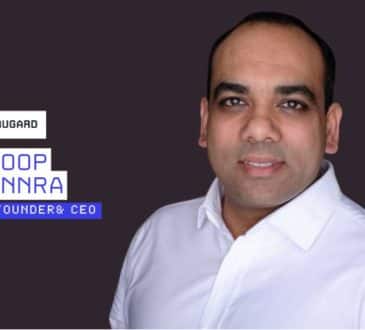Best Trends for Improving the Performance of Your Staff in 2024

Three factors affect the performance of your staff members (and, therefore, that of your staff as a whole):
- Individual skill
- Individual (intrinsic) motivation
- External conditions
While an entrepreneur can indirectly affect the first two, there’s so much you can do regarding external conditions. You can create a stimulating environment, make goals based on accurate evaluation, and help your employees focus on the tasks that matter the most.
With all of this in mind, here are some of the best trends for improving the performance of your staff in 2024.
- Measure current performance accurately.
First of all, before you assume that your staff is not trying (or not trying hard enough), you need to understand what you’re really talking about. It’s fine to feel that something could be done better, but in order to make some moves in the right direction, you need actual data.First, you need the right tool, such as the performance management software solutions reviewed by Techopedia. Aleksandar Stevanovic says these tools can help you set clear and measurable goals and provide continuous feedback.
The further benefits of using actual software are numerous. For instance, you’re making reporting incredibly easy. Moreover, you have a fair and impartial methodology for evaluating performance. Human reviewers are prone to making mistakes, having biases (sometimes even unconscious), or using different factors during different instances of performance evaluation.
Next, you need to compare your reports with industry averages and even check out what the numbers look like for some of the top-performing firms in your field. This way, you’ll be able to set a realistic range. This way, you’ll know how much you have to improve and how much you can improve.
Also, keep in mind that performance is not consistent, even with the most consistent teams. No one performs the same on their first day at work as they do at the end of their first year. It goes even further—no one performs the same during their first hour at work (while they’re still fresh) as they do during their last hour of the day.
- Focus on employee experience
Most of the guides focus on customer experience as if it were the only thing in the world. What they fail to mention is the employee experience, which is the key component to their engagement and productivity. Most importantly, great employee engagement always leads to higher customer satisfaction, which means that you get what you want either way.A massive part of employee experience is also whether they feel like their efforts are recognized by the management. According to one statistic, roughly 69% of employees would actually work harder if they felt their efforts were more recognized.
While employees are concerned with the objective aspects of their work engagement, it’s also important to understand that not all of them worry just about money and status. Most of the time, they just want to know that they’re making a difference and that others are noticing this difference.
Happiness is an abstract concept and hard to track/evaluate. However, don’t think for a second that it’s an accident that some of the least stressed countries in the world are also the richest.
Sure, some may argue that people who have fewer financial problems tend to experience less stress since their livelihood (one of the motives near the base of the pyramid) is not in question. However, it’s sometimes hard to determine what came first: the chicken or the egg.
The best way to get to the bottom of this is to avoid guesswork and focus on the feedback. Consult independent studies, but also ask your employees what they want and how they feel.
- Automate and outsource what you can
This may sound a bit contradictory, but the truth is that one of the best ways to help your staff boost their performance is to give them a chance to do what they’re here for.There’s nothing worse for performance than burying your staff in menial administrative tasks and then expecting them to hop back into their core responsibilities as if nothing happened.
This is especially troublesome when they’re in charge of a creative task. They come to work, have to go through a lot of tables, emails, and data entry, and then you expect them just to start working at full speed when they’re completely mentally depleted.
People don’t perform as well when you switch them from task to task, and multitasking (which is sometimes the route that they choose to take) is even worse for productivity and performance. No, they’re not doing two tasks at 50% of speed each.
The worst part is that it’s so unnecessary in this day and age. You have the option to automate (especially with the power of available AI tools). You also have the power to outsource these menial tasks to an outside agency (or even hire freelancers for the task).
Only when you let your team do their job will you earn the right to judge their performance and suggest improvements. This way, they’ll be more motivated and more focused. They’ll also be in charge of tasks that they enlisted to do.
- Trust and empower them
Lastly, you can’t expect them to outperform your expectations while you’re micromanaging them and holding their hands at every turn. Instead, you need to trust your team, give them autonomy, and show them that you trust in their abilities and judgment.Micromanaging does more harm than good. Sure, while your staff is new and small, it might be useful to glance across the shoulder of your employee every once in a while, but what happens when the size of your team outscales your time and attention capacities? It’s better to take measures that will ensure that this is not necessary in the long run than to encounter a massive bottleneck down the line (and sooner than you think).
Your employees need to feel like you trust them. When overseeing them with platforms like employee monitoring tools, what you’re actually doing is sending them a message that you either don’t trust their abilities or their work ethics. You’re also stressing them out additionally, which is never worth it.
By restricting them, you’ll also restrict their creativity. If they fear doing anything without your approval, they’ll avoid taking any risks, which means that they won’t experiment and push boundaries. This is where most missed opportunities will come from.
Lastly, you want to turn some of your employees into future leaders (for when your company grows). The only way to do so is to encourage and empower them early on. This process starts with you taking a risk of trusting someone who has yet to earn your trust.
Improving performance takes time, not just the effort
The last thing you need to understand is that improving performance takes a tremendous amount of time. You can introduce some of these changes right now, but it will take a while for the results to become noticeable. Also, just because the transformation is a slow process, this doesn’t mean it’s not worth it. The sooner you start, the sooner you get there.
Have you read?
A look at 30 Iconic Figures who Gained U.S. Citizenship.
These Are The Best Cities To Live in Every U.S. State.
25 Movie Remakes Outshining Their Originals.
Countries with the Most American Military Bases.
These Are the 50 Poorest Cities in America.
Bring the best of the CEOWORLD magazine's global journalism to audiences in the United States and around the world. - Add CEOWORLD magazine to your Google News feed.
Follow CEOWORLD magazine headlines on: Google News, LinkedIn, Twitter, and Facebook.
Copyright 2025 The CEOWORLD magazine. All rights reserved. This material (and any extract from it) must not be copied, redistributed or placed on any website, without CEOWORLD magazine' prior written consent. For media queries, please contact: info@ceoworld.biz








